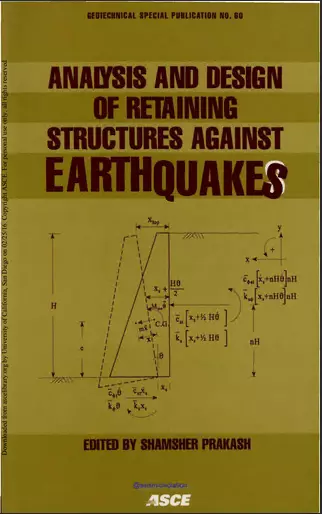ANAlYSIS AND DESIGN OF RETAINING STRUCTURES AGAINST EARTHQUAKES
Retaining structure may be subjected to seismic loads and experience either deformations and/or increased earth pressures. These structures may be either rigid-masonry free-standing retaining walls for highways, sections of wing walls for hydraulic structures, and abutments of bridges. Flexible retaining structures are most often reinforced earth sections.

Rigid structures have been designed for dynamic earth pressures most of the time. A sol ution for displacements of rigid retaining walls was obtained by our Research Group at the University of Roorkee (India) in I 974 for the first time. Subsequently for the last two decades, their displacements were analyzed and designs based on permissible displacements were attempted.
We have not reached a stage where acceptable analytical tools and design procedures for such structures are available. Studies on such structures during earthquakes is difficult because earthquakes cannot be made to order! Therefore, recourse is made to alternate studies, e.g. on centrifuge and, shake table models, and analytical studies and their comparison with performance records.
Download
http://s19.alxa.net/one/2023/05/Ana...ARTHQUAKES.rar
Retaining structure may be subjected to seismic loads and experience either deformations and/or increased earth pressures. These structures may be either rigid-masonry free-standing retaining walls for highways, sections of wing walls for hydraulic structures, and abutments of bridges. Flexible retaining structures are most often reinforced earth sections.

Rigid structures have been designed for dynamic earth pressures most of the time. A sol ution for displacements of rigid retaining walls was obtained by our Research Group at the University of Roorkee (India) in I 974 for the first time. Subsequently for the last two decades, their displacements were analyzed and designs based on permissible displacements were attempted.
We have not reached a stage where acceptable analytical tools and design procedures for such structures are available. Studies on such structures during earthquakes is difficult because earthquakes cannot be made to order! Therefore, recourse is made to alternate studies, e.g. on centrifuge and, shake table models, and analytical studies and their comparison with performance records.
Download
http://s19.alxa.net/one/2023/05/Ana...ARTHQUAKES.rar